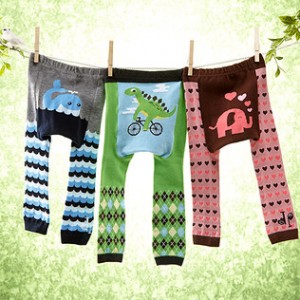 The benefits of play are undeniable. Children need it to learn and grow. But play can take many different forms. Even some activities we wouldn’t think of play are actually expanding their minds and improving their bodies. Here are the nine types of play your child will engage in.
The benefits of play are undeniable. Children need it to learn and grow. But play can take many different forms. Even some activities we wouldn’t think of play are actually expanding their minds and improving their bodies. Here are the nine types of play your child will engage in.
1. Unoccupied play – This play doesn’t look like play, but it is. You’ve probably seen your child fiddling with some object. It might not even be a toy. If the object or area is safe, leave him be. He’s learning how things behave and how his body works.
2. Onlooker play – This is when your child plays apart from other children and watches. It usually happens when a younger child is playing with older kids. It’s perfectly normal. Your child is soaking up the rules and becoming acclimated to group play.
3. Independent play – Just like it sounds, this is when your child plays alone. He doesn’t need your involvement all the time. He needs to learn how to handle himself emotionally when he’s alone. And honestly, a little privacy now and then is healthy for all of us.
4. Constructive play – This is whenever your child is building or making something. It could be a block castle, a painted picture, a pillow fort, or macaroni art. They learn how to manipulate objects and turn their ideas into concrete things.
5. Dress up play (or fantasy play – Dressing up in costumes lets kids adopt other roles. This bolsters their empathy abilities by experimenting putting their feet in another’s shoes (so to speak). It also improves their imaginative abilities.
6. Competitive play – Competitive play is healthy because your child learns how to follow rules, execute strategies, take turns, and play as part of a team. These lessons last forever. You don’t have to stop competitive play unless it becomes aggressive.
7. Physical play – Here your child gets valuable exercise and improves his fine and gross motor skills.
8. Parallel play – If you stick two 18-month or two-year olds in the same room, you’ll likely see them play side-by-side, almost independently. If they share toys, they certainly won’t cooperate in the same game. They just aren’t capable of that at such a young age. It doesn’t mean your child doesn’t like other kids, he just hasn’t developed the right empathy skills yet. But this play sets the stage for cooperative play later one.
9. Cooperative play – This is the gold standard of play because your child gets a ton of benefits. When children cooperate to play the same games, they’re learning invaluable social skills, problem solving, and empathy.
What’s your child’s favorite type of play?
Doodle Pants is an exciting collection of stylish toddler leggings for girls and boys, wild animal prints, and charming original characters. Little ones (3 months to 3T) can squiggle and wiggle with ease thanks to a roomy seat, stretchy ribbed cuffs and a comfortable elastic waistband. They’re made with thick, flexible material that holds up and is easy to wash. Whether running havoc on the playground or dressing up for an impromptu dolly tea party, these are the perfect pieces for a frolicking fun time.
For more information, visit http://www.doodlepants.com.
Interested in writing a guest blog for Doodle Pants? Send your topic idea to pr@doodlepants.com.
All data and information provided on this site is for informational purposes only. Doodle Pants makes no representations as to accuracy, completeness, current-ness, suitability, or validity of any information on this site and will not be liable for any errors, omissions, or delays in this information or any losses, injuries, or damages arising from its display or use. All information is provided on an as-is basis.

